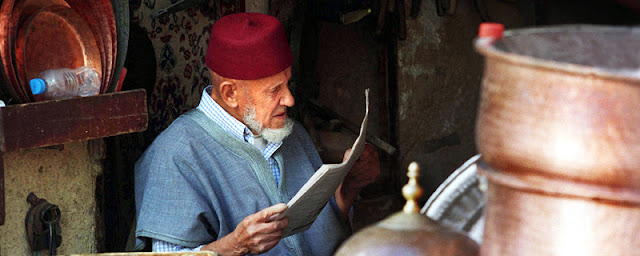Tucked away in Morocco's high Atlas mountains the vast oasis of Errachidia, among the most beautiful in the south of the country, is today threatened by bad management. Omar Brouksy, writing on Iol Scitech, tells the story.
A stone's throw from the tarred road that crosses the oasis of Goulmima, near Errachdia, a well closely guarded by the M'barek family supplies a small maize field with the help of a water pump.
“The water level has dropped a lot. God alone knows why,” said Moha M'barek, a farmer in his 80s who was born in the oasis, where he owns a small plot of land.
“I dug four wells before finding water. Around me, the neighbours have no water. Before, there was water everywhere. That's the will of God,” M'barek added, staring down at the stream carrying well water to the fields.
For centuries the sharing out of water in the oasis, now threatened with drying out, was managed in the “khattara” tradition, whereby water towers were used and distribution took place according to need, in line with ancestral Berber rites.
This system made it possible to maintain a regular flow of water all year round.
But more recent exploitation of the oasis illustrates the risk of misusing the planet's water resources, which was an issue on the agenda of the Rio+20 Conference on Sustainable Development.
From the 1970s, farmers have introduced water pumps, leading to the progressive depletion of the water table. Fields, once steadily cultivated and green, are now wasteland abandoned by the oasis dwellers.
“The outlines of the fields, you can see how big they are. Look, one, two, three, four meters wide. They are big, so that means there was lots of water,” said Lahcen Kabiri, professor of environmental geosciences at the University of Errachidia.
“Little by little, the farmers opted for individual wells, which they fitted with water pumps. Thousands of wells were dug, and in a few years the water had dried up,” added the academic, pointing to an immense tract of land bordered by a few ailing palm trees.
Kabiri said the situation “could turn into a real catastrophe in light of the role of oases in the struggle against desertification.
“If the water runs out, then everything that depends on it will be in a dramatic situation. We will be up against an unprecedented ecological disaster.”
Residents and local authorities have become increasingly aware of the threat to the oasis, which is one of the largest in the north African country.
In the small palm grove of Izilf at the heart of Errachidia, several farmers have got together to take a joint approach to the problem.
“We have set up a cooperative to manage the water supply collectively,” said Moha Bousseta, the president of the cooperative. “Otherwise, everything that you see will no longer exist. There'll be nothing left, everything will be dead, dried out.”
SHARE THIS!


Un problème grave pour le Maroc et toute la région. Les images par satellite montrent que le désert frappe aux portes des Pyrénées au nord de l'Espagne déjà...
ReplyDeleteAu Maroc, il n'y a pas de prévoyance et de solutions à long terme. C'est quand la catastrophe arrive que l'on se réveille. C'est comme pour les problèmes de la santé: très souvent, on attend le stade de l'agonie pour se décider à consulter un médecin...
Les barrages qui dépassent la centaine ne profitent qu'aux grandes surfaces irriguées et qui appartiennent aux grands notables du pays. Avec la désertification galopante, avec le gaspillage de cette précieuse ressource, avec la pollution, avec les besoins croissants en eau potable des villes, le problème de l'eau est le défi majeur du pays à court, à moyen et à long terme. Mais ce n'est pas demain l'éveil...
Bonne fin de soirée!